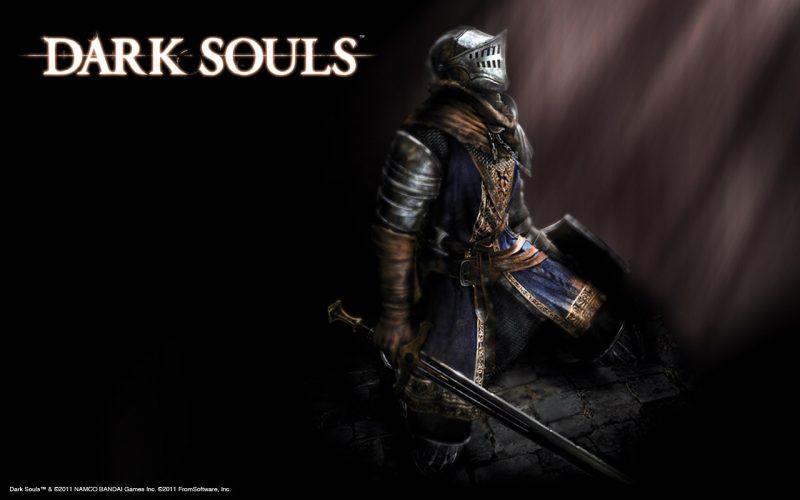Playing in The Dark (or Why A Casual Gamer Loved Dark Souls).
Filmmaker and host of the Flixwise Canada Podcast, Martin Kessler takes an explorative look back at the unforgiving, yet thoroughly rewarding, twisted nightmare of a video game that is 2011’s Dark Souls.
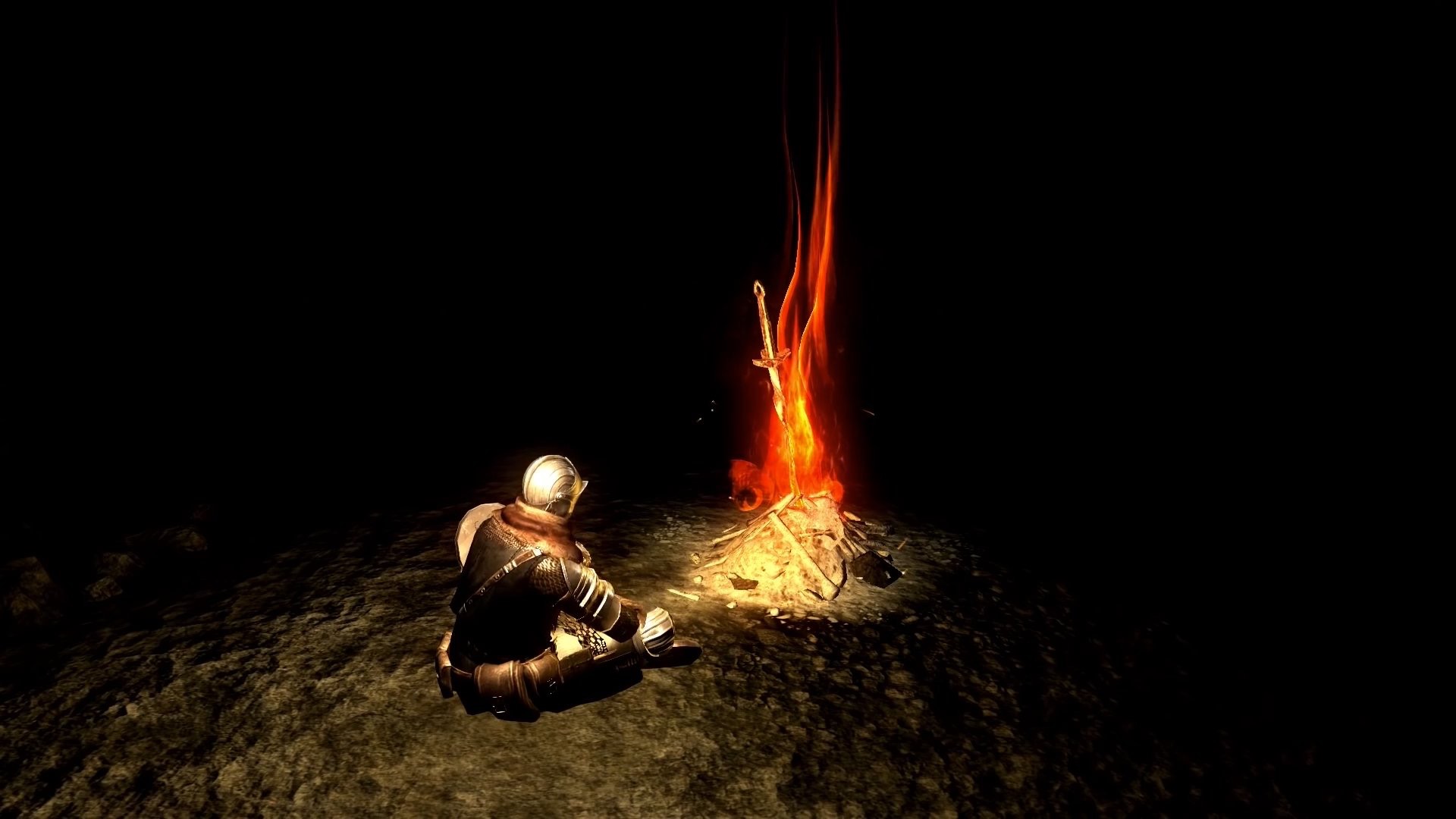
Film is my first love, though once in a while I’m reminded of the artistic potential of other mediums such as video games. I play video games infrequently and ineffectively enough that I could probably be described as a “casual gamer”. I’d heard that Dark Souls wasn’t for casual gamers, but the few glimpses I’d seen of it convinced me otherwise. I had wanted to try playing a fantasy video video game and images of a grim medieval phantasmagoria convinced me that Dark Souls was the one for me. My ‘Prepare to Die’ Edition of Dark Souls arrived in the mail and I dove into it more or less haphazardly. It was a long road, but by the end I found that it was one of the (if not the) most rewarding experiences I’ve ever had playing a video game.
Dark Souls is the spiritual (aka legally distinct) sequel to the cult sleeper hit game Demon’s Souls directed by Hidetaka Miyazaki, who is of no relation to master animator Hayao Miyazaki as far as I’m aware. Miyazaki refined and elaborated upon the groundwork he’d laid in Demon’s Souls to create something truly special. It’s difficult to pinpoint anything totally original in Dark Souls’ makeup, but it seems destined for classic status amongst gamers.
Having said that, I want to break down into four main reasons why that was the case, and why anyone who hasn’t already experienced Dark Souls may find it appealing. Here we go…
Conquering Death.
So, what’s the deal with Dark Souls? The thing you’ll hear consistently is that “Dark Souls is hard”. The Prepare to Die edition lived up to its name. I died. I died a lot. This probably sounds like a miserable experience, but it wasn’t. I’ve given up on more than a few video games for being too difficult or repetitive, but giving up never crossed my mind whilst playing Dark Souls.
There’s an overwhelming sense that Dark Souls doesn’t care if I beat it. The onus of playing through it all was entirely on me. I think calling it “hard” may be misleading. “Challenging” maybe? Even though there were plenty of walls of frustration, it ultimately made the game more enjoyable and exciting when I overcame those walls. It’s not a game that holds your hand and is often more than a little obtuse, but it makes your accomplishments, your accomplishments. After playing Dark Souls, so many other games feel patronizing in comparison.
Even with a character that’s levelled-up and wearing heavy duty armour, I found that enemies would often still be able to kill me in two or three hits. Prudence and trial and error are key, and the advantage of high levels and rare items is relatively minor. However, gradually I found that as I played on, I died less frequently. I found that as I progressed through the game I picked up the skills necessary to advance through seemingly impossible challenges; being aware of my surroundings, judging when to be cautious and when to be aggressive, being strategic in my approach while being flexible enough to change my strategy at various points. Even though it seems like the game doesn’t care if I beat it, looking back it becomes possible to appreciate how it subtly teaches you how to play it.
I’ve heard it said that, “the character doesn’t level up, you do”. One bit of advice fans of the game like to jokingly give to anyone asking how to advance through any particular hurdle in the game is to “get good”. Still, I never became good enough to feel arrogant about the game. There’s nothing quite as humbling as defeating a mighty boss, only to be slain a few minutes later by a weak rat.
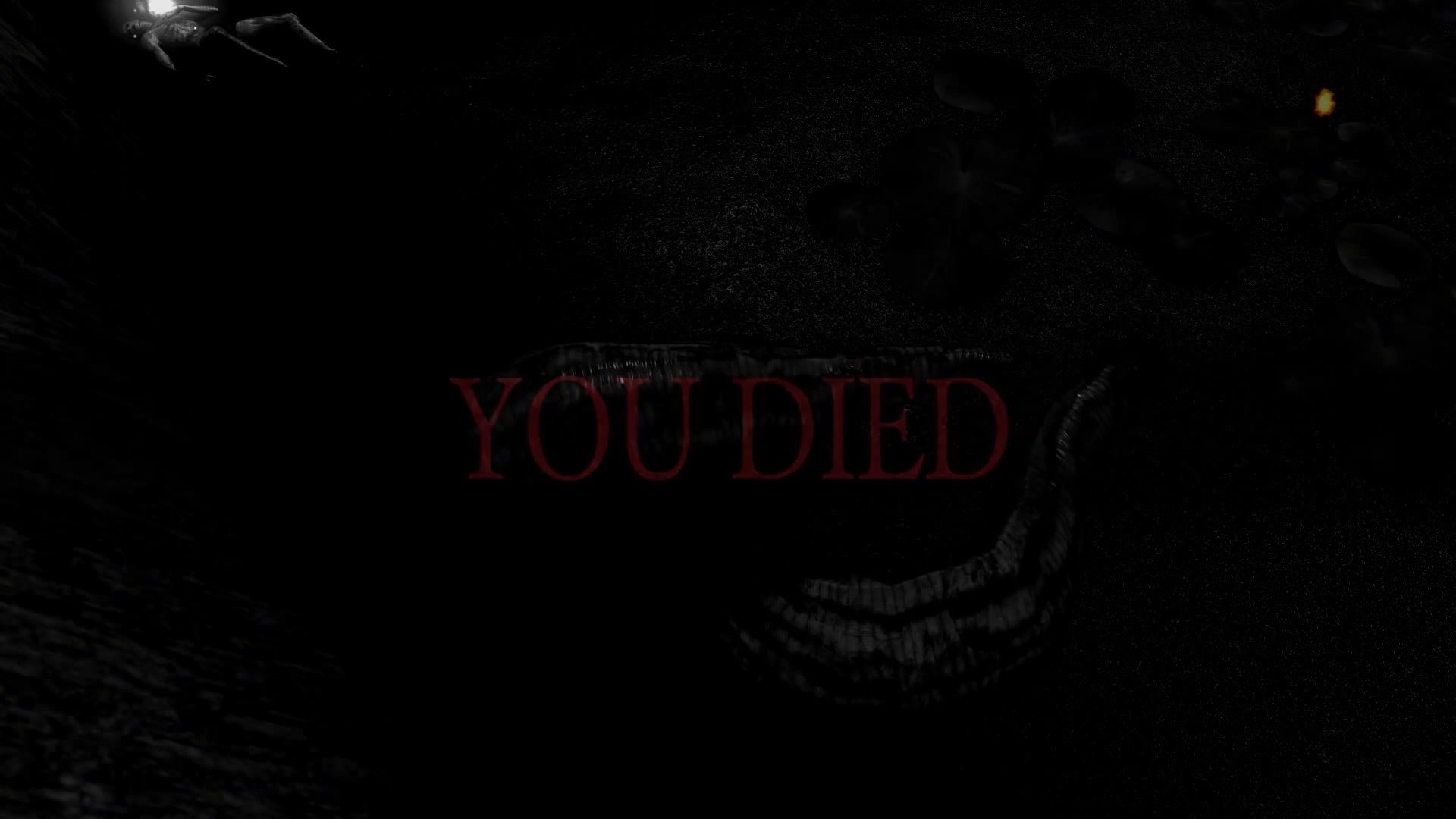
Get used to seeing this.
Still, the difficulty and challenge of the game is more nuanced than enemies simply being able to kill you easily. For instance, there’s no pause button. The only respite comes from the bonfires which function like check-points. When you die, you return to the last bonfire you rested at. Resting at a bonfire will restore your health and your estus flask, which restores your health a limited number of times while away from the bonfire. The downside of resting at a bonfire is that it also revives any enemies you’ve slain (minus bosses and a few key characters). This means that progress is often dependant on you being able to fight your way through every enemy and boss between you and the next bonfire.
The game’s currency is in souls, collected from defeated enemies. They can be used to level-up, or to buy armour or weapons or items. Die and you lose them all, but if you make it back to the spot where you died, your blood stain, without dying again you have a chance to reclaim your lost souls. In that way the game incentivizes you to at least make it back to where you made a mistake earlier. Death in the game can seem like an enormous setback, only until you realize that it’s not so long as you improve a little or learn something from your previous life.
I’ve seen the combat itself described as “clunky”, but it’s not without its charms. Perhaps most appealingly, a ‘button mashing’ approach will get you nowhere. Moves use up a certain amount or stamina represented as a green bar that gradually refills. Once a button on the controller is pushed, a move is locked in. It forces you to be deliberate as you commit to every move you make. Initially I spent a lot of the fighting hiding behind a shield, occasionally sneaking in a strike where I could, and that was as tedious as it sounds, but after becoming more comfortable with the game I found that became less and less necessary. The combat became almost dance-like, relying on movement to avoid blows more than a shield, and knowing how many hits to get in on your enemy before getting out of the way again, maybe even throwing in a parry or backstab when possible. Of course, that’s just how I became comfortable playing, there’s no wrong way to play. If you stick to it, eventually you’ll make it to the end.
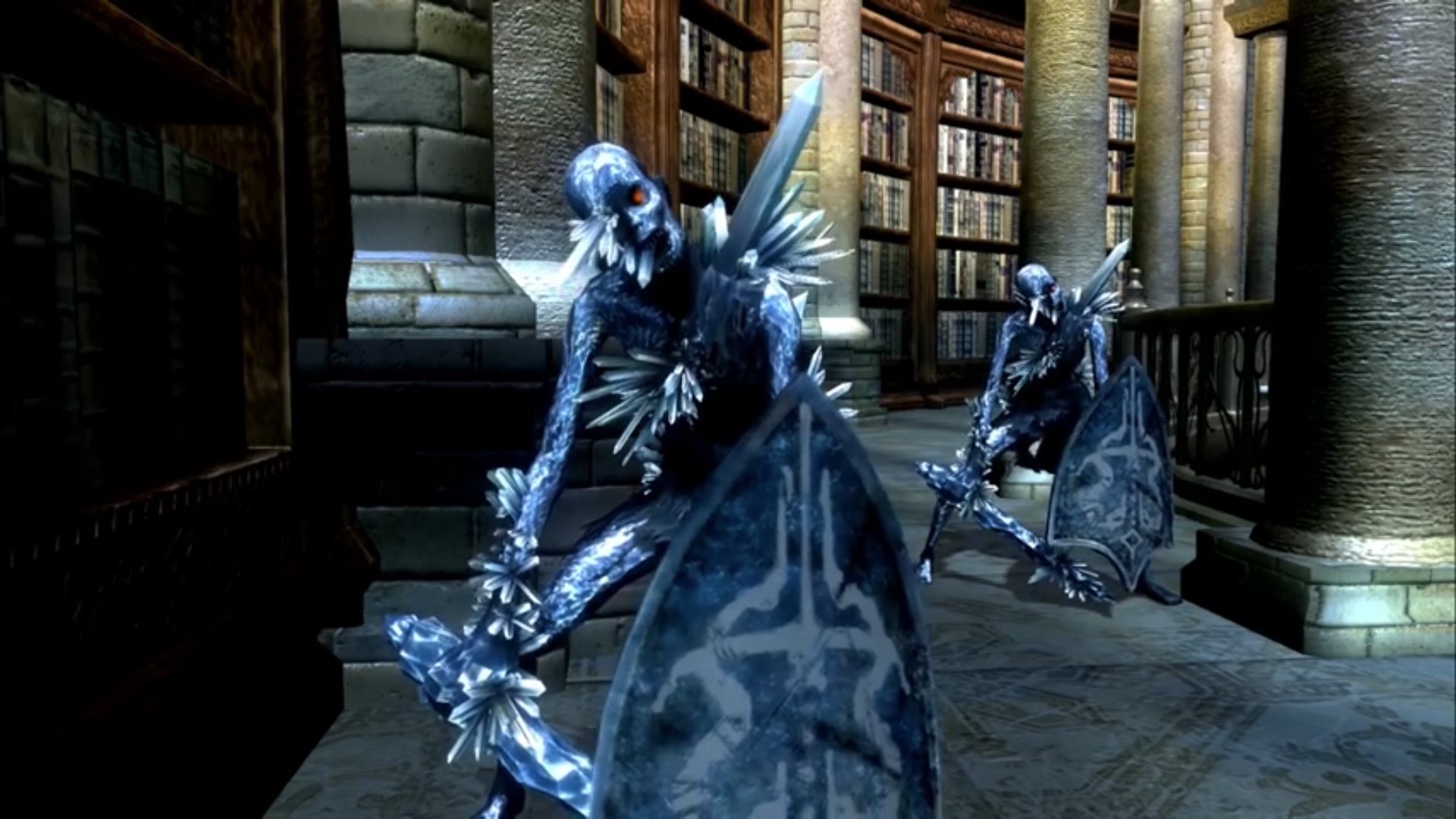
Some nasty bejeweled baddies.
Telling people I was playing through Dark Souls turned out to be a bit of a magnet for unsolicited advice. Frequently I’d hear in raised tones of voice, things like “Why didn’t you pick the Master Key as your starting item?” and “Don’t feed that to Frampt!”, but I wanted to explore the game on my own terms, and a part of that included making the sorts of mistakes that a lack of foreknowledge lends itself to. There’s a peculiar sort of fun in the surprise that a decision that seems totally reasonable has bizarre repercussions, and in trying to uncover the game’s oblique logic.
I generally tried to avoid tutorials and guides (though I definitely owe James Hancock a shoutout for his YouTube play-through, helping me past a pair of particularly frustrating archers). Though I did find it reassuring to learn about speed runs and challenge runs; gamers showing their skill by beating the game in as little time as possible, or beating it while keeping their character at Level 1, or beating it with laughably weak weapons like the broken sword you might start out with. I knew I’d never be able to play the game like that, but I also knew that if I was stuck at any given point that the problem wasn’t that I had to go back and kill weaker enemies to grind my way to a higher level, or to find some special weapon. In that way the game is very flexible.
Some character builds and play styles are apparently more viable than others, but ultimately the most viable approach is the one a player is most comfortable with. For instance, I skipped the magic stuff altogether, for no other reason than it didn’t appeal to me. Even though there were points where pyromancy, sorcery, or miracles might have been beneficial, I never felt like the game was forcing me to use them.
The same goes for weapons. Often you’ll pick up a fancy looking weapon that has better stats than the one you’re currently using, switch over to it, find that you don’t like the way it handles, and quickly switch back. There are also weapons like the Drake Sword (gained from shooting off the tail of a dragon) that might initially be overpowered, but plateau before too long and become a crutch without you realizing it. For me it was best to keep it simple. I experimented a bit during my playthroughs, but ultimately stuck with a plain Battle Ax, because I liked the way it moved. I became comfortable with the rhythm that its movement allowed for. Something reliable to hold onto in the unpredictable world of Dark Souls.
It’s all a delicate balance that allows a player to start out getting their ass kicked by the tutorial level, but ultimately finish the game feeling like a champion.
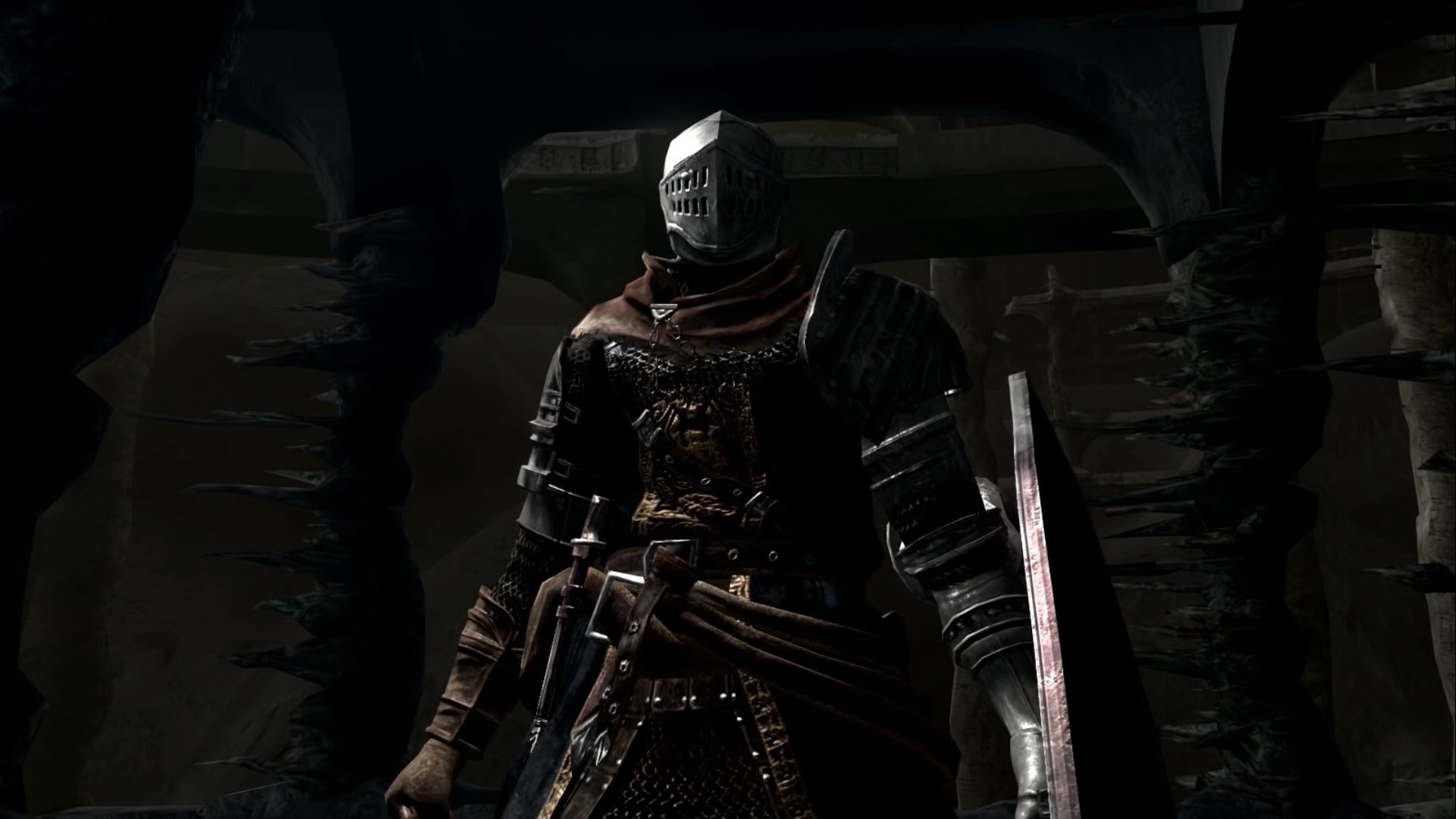
Newly minted ultimate badass.
A World To Get Lost In….And to Find Yourself.
The world of Dark Souls is like a fantasy world in the midst of a slow apocalypse. You can feel the entropy winding down, and within the context of the story it might be nearing the heat death of this fantasy universe. The fire of the world is going out, and darkness is widespread. It’s often a lonely place, full of decay and degraded grandeur, but far from empty.
Dark Souls presents not quite an open world, but a very well thought out world. Decidedly a closed circuit, most sections of the game are interconnected, often in surprising ways that reveal a carefully constructed geography. It’s a thrill to have your understanding of the world of the game constantly reoriented as you travel through it. Often I thought I had traveled so far only to discover that I was actually close to an area I had played through much earlier in the game and for that to make sense. There’s a broadly corkscrew quality to the world’s layout, with some areas twisting on top of others. There’s nothing quite like the sensation of realising your path has been a sort of moebius strip, folding in over itself. It’s a sensation that is partly lost however, when late in the game you can obtain the ability to teleport between bonfires.
The levels themselves are full of evocative details and a specificity in design that makes them feel distinct and continually surprising. Many were inspired by real-world locations and architecture, adding to their thought-out quality. There’s very little repetition, and most areas seem to be built around a specific theme. Each has its own gimmicks, often the real challenge of getting through a level has less to do with the strength of the enemies themselves, as much as their placement within it.
Often I found myself forced to look for alternative routes and shortcuts, or to rethink how I navigated a level to avoid fighting multiple enemies at once or to close the distance with enemies that used ranged attacks. I might be able to best a crystal golem without breaking a sweat, but when forced to fight them on a slippery bridge where I can’t get out of the way of their attacks it becomes an entirely different story. Of course you can find ways to turn the environment to your advantage as well, being able to lure a hoard of enemies into a narrow corridor so they’re forced to fight you one at a time. There’s a real emphasis on location, location, location.
My favourite level was the the trap-filled Sen’s Fortress, battling the environment itself as much as the lizard warriors within it. Other levels are impressive more for their atmosphere. One of the most impressive is the sense of awe when fighting through the gothic city of Anor Londo built for gods of giant proportions, appearing golden in sunlight. Then a player can inadvertently plunge it into darkness, trigger new story events and cause most of the enemies to disappear, which makes for an extraordinarily eerie experience.
Of course some levels are weaker than others, perhaps most glaringly is the lava level, Lost Izalith. It’s linear and spread out, and populated with dragons. It’s noticeably lacking in the level of detail and thought that clearly went into most levels. Apparently Lost Izalith was a rush job, created late in game-development when time and money were tight. Still, the standard for level design is incredibly high, even in levels that are not easily accessible.
One thing I found myself doing after clearing out an area of enemies was to just take my time absorbing the ambiance. Taking in the light and sound while wandering through a drowned city or crumbling cathedral. I could reflect and become absorbed and lost in my own thoughts and memories while spending time in these grand and intricate spaces. It’s difficult to put into words, but there’s an existential quality to it.
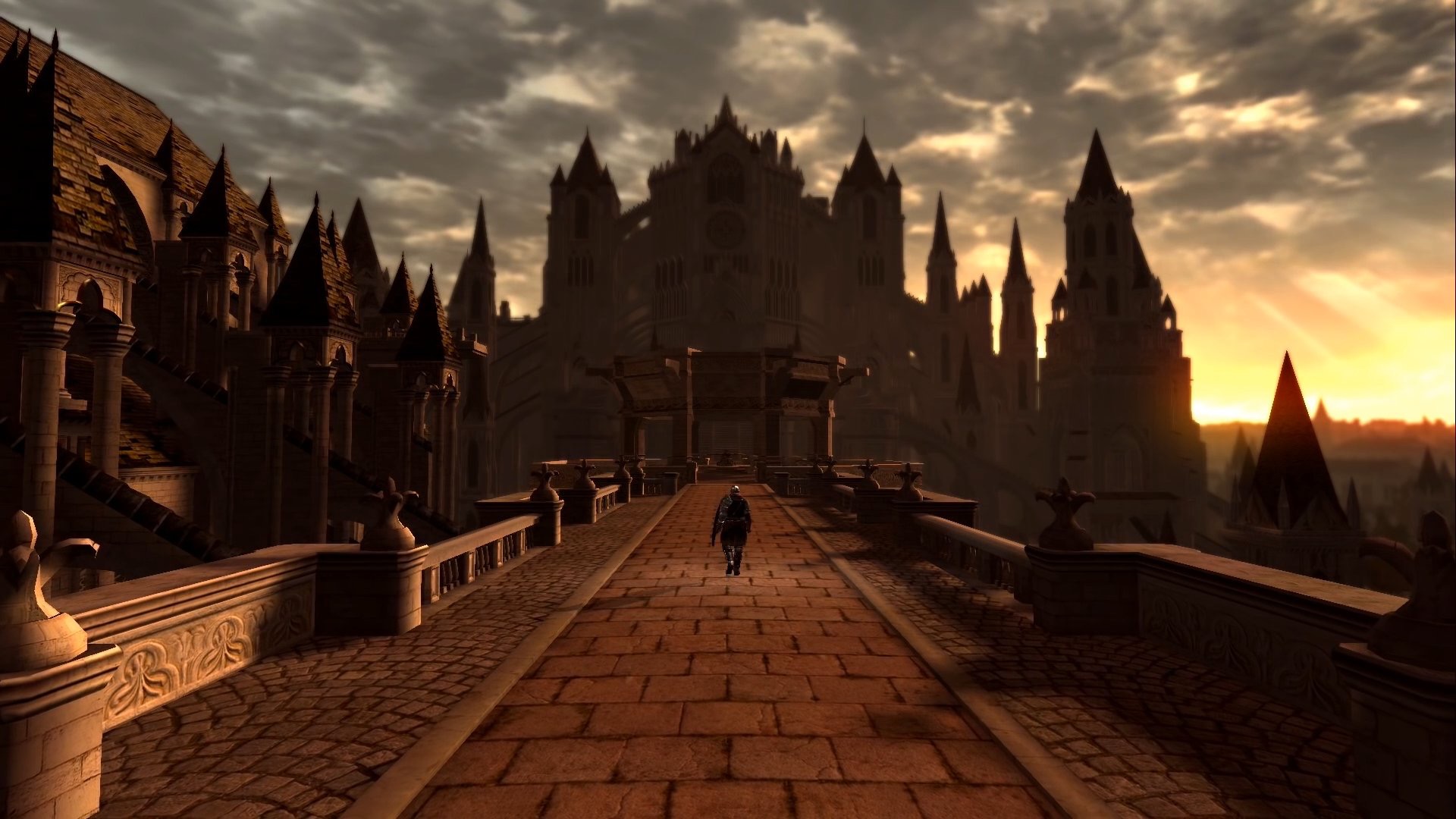
The long and surprisingly winding road.
A Boss Battle is Its Own Reward.
Typically in most games you might beat a boss to get some reward. In Dark Souls it’s the boss battles themselves that are often treated as the rewards. Sure, you get a bunch of souls for defeating them, but really it’s just a pleasure to go head to head with the game putting it’s best foot forward as far as ‘challenging’ goes. Some bosses are optional and well hidden, but you’re tempted to seek them out. One in particular is completely passive will only fight if you attack them, and ask you “Why?” after you defeat them. It might undercut the triumph of the moment, but it’s a good question.
There’s nothing quite like having your blood go cold the first time you see what boss you’ll be fighting. You take one look at the Gaping Dragon for instance and feel too tiny to stand a chance against it (even though it’s one that you can probably beat on your first attempt). Boss fights can also be full of surprises, and it’s easy to feel overwhelmed when you realize you have to fight not one, but two gargoyles at the same time. Of course there’re a couple of losers in the bunch; a couple of not-particularly-memorable demons, and I never want to go through the Bed of Chaos ever again. The majority of the boss battles though are superb.
Some bosses can manage to make you feel for them, especially the once noble Knight Artorias, and Sif, a giant wolf wielding a sword in its mouth (you have to toss a coin to determine if it’s so goofy it’s badass or so badass it’s goofy), guarding the grave of its master Artorias (time can also be a little nonlinear in this world). You can actually feel pity for Sif, as they become weaker throughout the battle and begin to limp, or sadness for Artorias as he becomes increasingly corrupted by darkness during your battle.
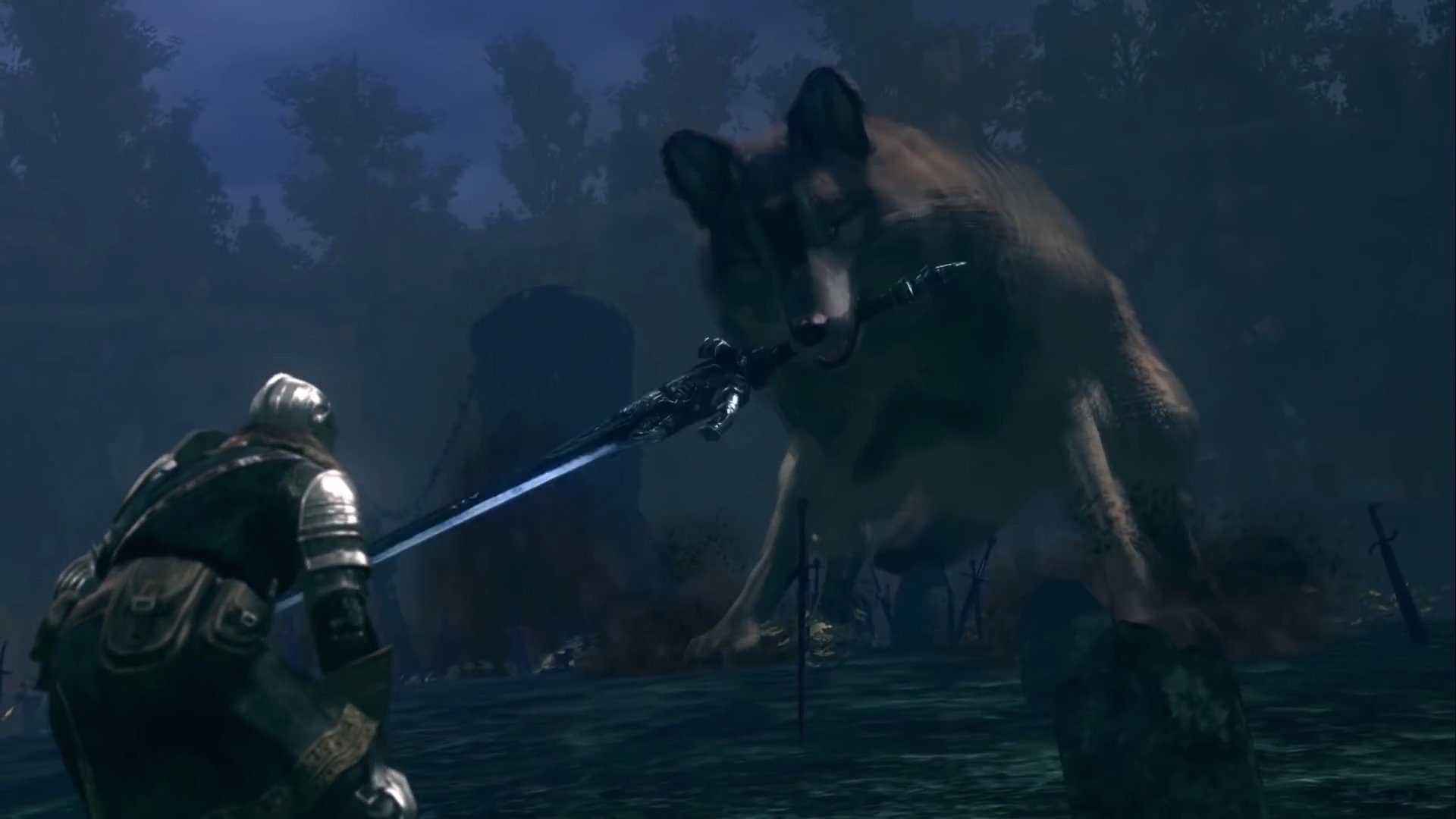
This is cool, right?
My favourite boss fight of the game was with the duo, Executioner Smough and Dragon Slayer Ornstein. A pair of demigods in golden armour; Smough wielding a giant hammer and Ornstein a spear. They fight even better than they look. Each on their own would have made for a challenging boss fight, but together they’re nearly impossible. If you kill one, the other absorbs their power and becomes even more powerful. The general advice to beat them is to summon the sun-praising NPC, Solaria to turn the two-on-one fight into a two-on-two. I decided against that. I wanted to beat them both myself. It took half of forever, but eventually I did. It was one of the most satisfying victories I’ve ever had playing a video game. Strangely, the Ornstein & Smough boss battle are not the final bosses of the game, though it fits thematically as they’re a representation of the world before its fall. After that the game slides into a gradual denouement. The boss battles that follow can be a little anticlimactic, though there’s a thematic resonance there as well, fighting opponents who are long past their prime. Each leaves you with a different impression of the game’s world in decline.
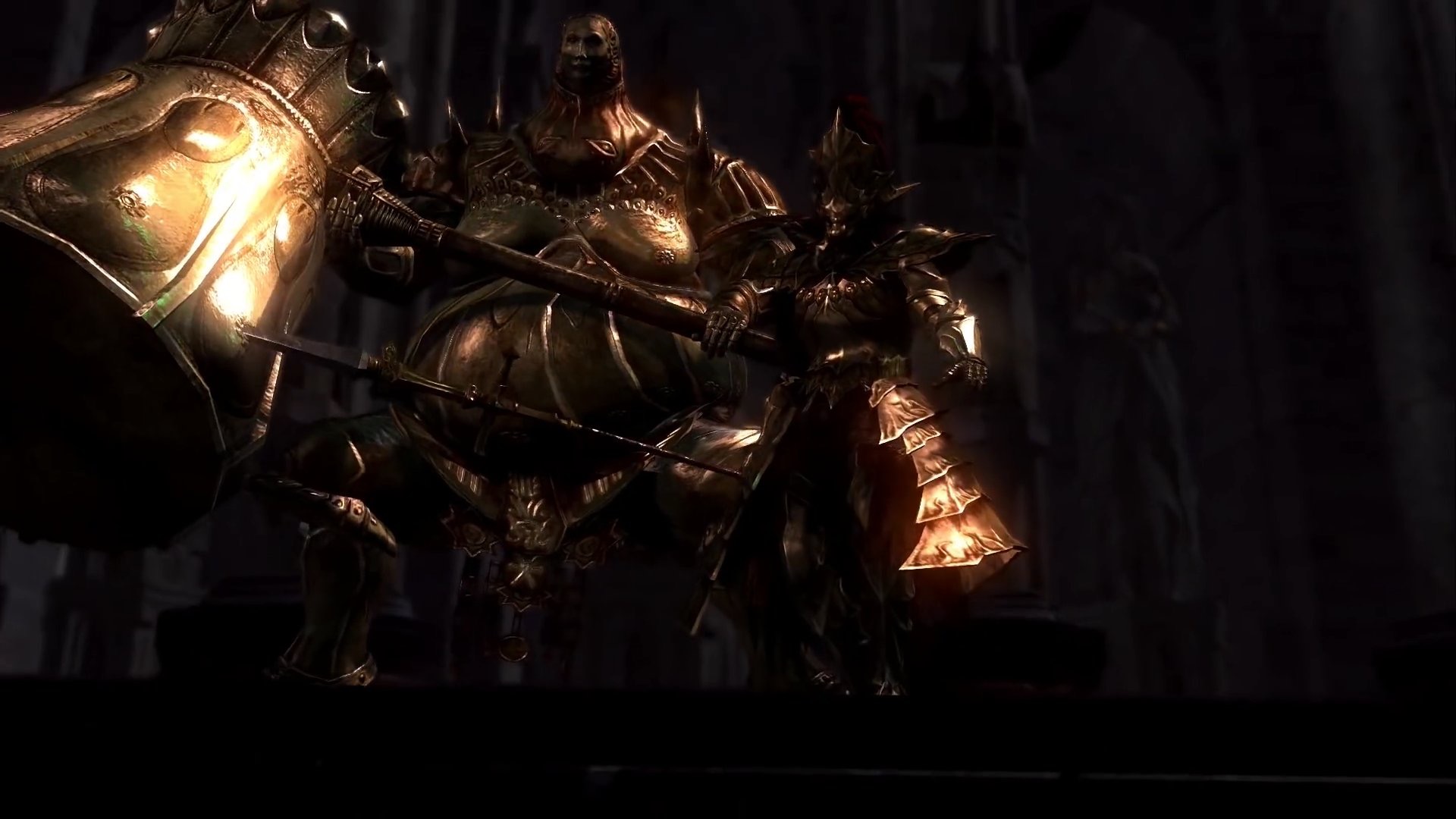
Laurel & Hardy these two are most certainly not.
The Devil’s In The Details.
Dark Souls opens with a beautifully animated cinematic that establishes its mythic world. A grim bit of narration tells you the following:
In the Age of Ancients the world was unformed, shrouded by fog. A land of gray crags, Archtrees and Everlasting Dragons. But then there was fire and with fire came disparity. Heat and cold, life and death, and of course, light and dark. Then from the dark they came, and found the Souls of Lords within the flame. Nito, the First of the Dead, The Witch of Izalith and her Daughters of Chaos, Gwyn, the Lord of Sunlight, and his faithful knights. And the Furtive Pygmy, so easily forgotten. With the strength of Lords, they challenged the Dragons. Gwyn’s mighty bolts peeled apart their stone scales. The Witches weaved great firestorms. Nito unleashed a miasma of death and disease. And Seath the Scaleless betrayed his own, and the Dragons were no more. Thus began the Age of Fire. But soon the flames will fade and only Dark will remain. Even now there are only embers, and man sees not light, but only endless nights. And amongst the living are seen, carriers of the accursed Darksign. Yes, indeed. The Darksign brands the Undead. And in this land, the Undead are corralled and led to the north, where they are locked away, to await the end of the world… This is your fate. Only, in the ancient legends it is stated, that one day an undead shall be chosen to leave the undead asylum, in pilgrimage, to the land of ancient lords, Lordran.
In Dark Souls you play as that chosen undead hero. Or maybe just an undead hero. And you’re quest is to go to Lordran to…to what? To rekindle the flame? Maybe. Maybe not. Things don’t get much clearer.
The story is told more through insinuation than exposition. It’s difficult to walk the line between spoilers and total vagueness, but on its basest level, Dark Souls could be taken as a minimalist version of Joseph Campbell’s Monomyth. As simple as stories get, but just scratch the surface and there are surprising dimensions of complexity and depth. NPCs (non-player characters) will misinform or mislead you, or even be revealed to be illusions. If you’re someone who doesn’t take things at face value, it can drastically change your perception of the story and its theme. Even something as easy to take for granted as item placement can reveal story when you take a closer look. There’s a whole bunch of videos on YouTube that try to connect the dots of Dark Souls’ backstory or lore. Watching them can feel a little like watching archeologists trying to piece together a lost history from a few clues and arguing over what’s most likely. Still, it’s fitting for the game that much of its story remains murky and ambiguous.
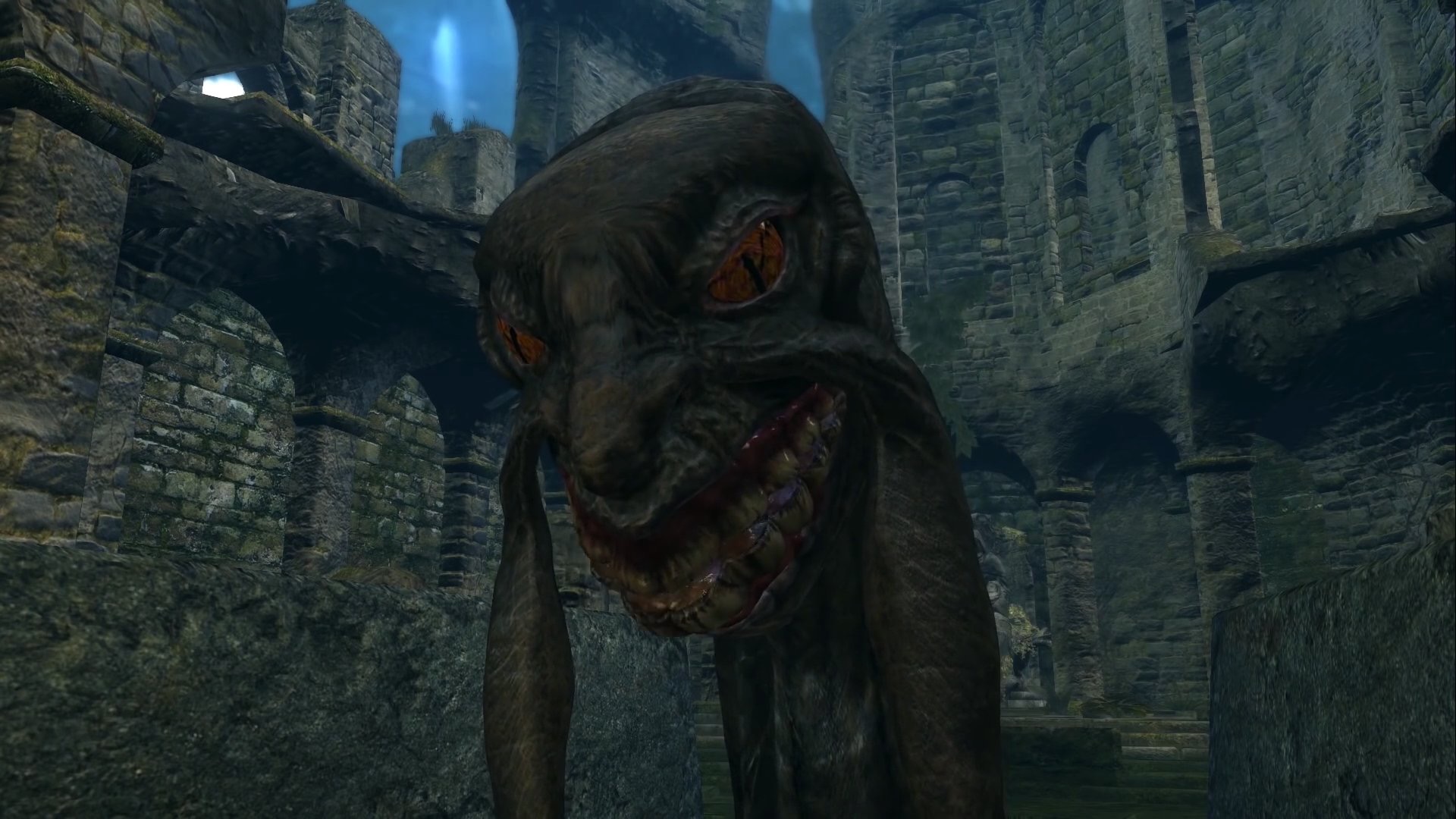
A face you can probably trust.
I think it’s noteworthy that not every level in the game and not every boss is mandatory. In fact, some like The Painted World of Ariande, are astonishingly well hidden, and can only be accessed through completely unintuitive means. I think it’s brave on the part of the game developers to put so much effort into creating things that could more than easily be missed. It might sound intimidating to compeltionists, but the effect it has is very immersive. There’s a fantastic sense of reward for exploring the game. Even the sense that you’re missing or overlooking things is exciting, as it makes the game feel a little larger and mysterious and inexhaustible. It makes you want to return to it. It also rewards the sort of curiosity that usually breaks games. There are things a player might attempt out of curiosity with the assumption that it wouldn’t be allowed because it would derail the game, only to discover that Dark Souls is less on rails than it may at first appear.
There’s a wonderful tension between how detailed and rich the game is while also being indefinite. It’s a quality that makes you want to interpret its narrative and themes and find meaning in it. I could easily imagine a Room 237 style documentary being made for it. I think it’s interesting that there’re two possible endings for the game, but which is the ‘good’ and which is the ‘bad’ ending may depend entirely on how a player engages with the narrative aspects of the game. Maybe both are ‘bad’, or maybe that sort of label is inapplicable. There are more than a few mysteries wrapped in mysteries, hidden in this maze of a game.
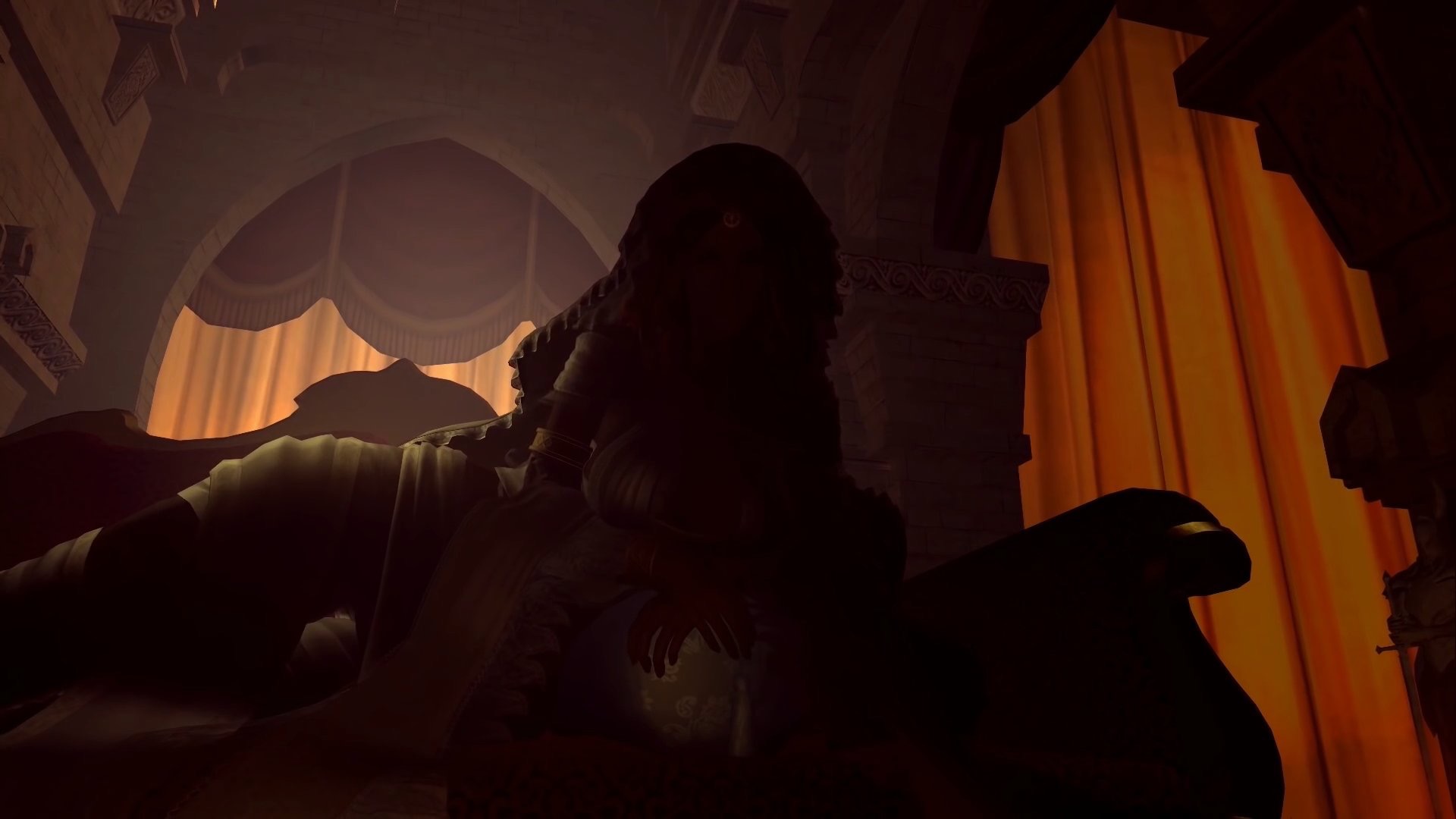
Don’t mind the man behind the curtain.
For a video game, it’s remarkable how much has lingered with me after playing through, and how much outside of the immediate thrills of playing have stayed in my mind. While the game may not be entirely above criticism, I think for these reasons it has a life outside of playing it, making me want to revisit it. I think it’s likely to be remembered as a masterpiece among gamers, and is a game that’s worth exploring for casual and hardcore gamers alike.
Dark Souls is available on PlayStation 3, Xbox 360 and Microsoft Windows and below you’ll find the first of Wrong Reel host, James Hancock’s 32 Dark Souls play-through videos.

